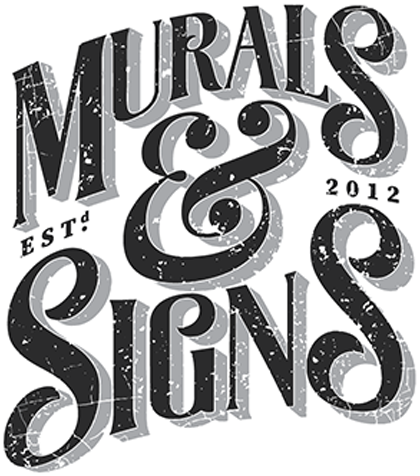Commercial sign painting is a dynamic and creative field that requires attention to both artistic detail and the well-being of the individuals involved. As sign painters bring their creative visions to life, it’s essential to prioritize health and well-being. This comprehensive guide explores the key health considerations that are integral to successful and sustainable commercial sign painting.
The Intersection of Creativity and Health
In the world of commercial sign painting, the pursuit of artistic excellence goes hand in hand with maintaining the health and safety of sign painters.
Physical Health
Physical health is a cornerstone of a successful sign painting career. Proper ergonomics, posture, and body mechanics contribute to long-term well-being.
Ergonomic Workspace Setup
Design workspaces with ergonomic principles in mind. Ensure that tables, chairs, and equipment are positioned to support proper posture and reduce strain.
Body Mechanics
Teach sign painters proper body mechanics, such as lifting techniques and posture, to prevent musculoskeletal injuries and discomfort during extended painting sessions.
Air Quality and Respiratory Health
Air quality plays a pivotal role in the health and comfort of sign painters, particularly when working with paints and solvents.
Ventilation
Proper ventilation is crucial to maintaining good indoor air quality. Ensure that workspaces are well-ventilated to minimize exposure to paint fumes and harmful particles.
Respiratory Protection
Provide respiratory protection, such as masks or respirators, when working with paints that emit fumes. Respiratory protection safeguards against inhalation of hazardous substances.
Low-VOC and Zero-VOC Paints
Opt for low-VOC or zero-VOC paints to reduce the emission of harmful volatile organic compounds into the air. These paints contribute to better indoor air quality.
Skin Protection and Chemical Exposure
Minimizing skin exposure to paints and chemicals is crucial for sign painters’ health and safety.
Personal Protective Equipment (PPE)
Equip sign painters with appropriate PPE, including gloves, aprons, and clothing that covers exposed skin. PPE acts as a barrier against chemical contact.
Proper Hand Hygiene
Encourage frequent hand washing and the use of skin-friendly cleaning agents to remove paint and chemicals from the skin. Clean hands help prevent skin irritation and contamination.
Eye Safety and Protection
Protecting the eyes is paramount when engaging in sign painting projects to prevent injuries and irritation.
Eye Protection
Require the use of safety goggles or glasses with side shields to shield the eyes from paint splatters, debris, and accidental contact with harmful substances.
Proper Handling of Hazardous Materials
Educate sign painters about the safe handling of hazardous materials. Provide guidelines for proper storage, use, and disposal of paints, solvents, and chemicals.
Mental Well-Being and Stress Management
Maintaining mental well-being is as important as physical health in the field of commercial sign painting.
Creative Expression
Encourage sign painters to view their work as a form of creative expression. Embracing creativity can contribute to reduced stress and increased job satisfaction.
Work-Life Balance
Promote a healthy work-life balance to prevent burnout. Sign painters should have time for relaxation, hobbies, and spending time with loved ones.
Stress Management Techniques
Provide resources and tools for stress management, such as mindfulness exercises, deep breathing, and relaxation techniques.
Preventing Repetitive Strain Injuries
The nature of sign painting work can lead to repetitive strain injuries if proper precautions aren’t taken.
Stretching and Movement
Encourage sign painters to take breaks for stretching and movement. Regular stretching can alleviate muscle tension and reduce the risk of injuries.
Rotating Tasks
Rotate tasks and vary the movements involved in sign painting to prevent overuse of specific muscles and joints.
Regular Health Check-Ups
Regular health check-ups contribute to sign painters’ overall well-being and catch any health issues early.
Eye Examinations
Encourage regular eye examinations to detect any vision-related issues caused by prolonged close-up work.
Musculoskeletal Health
Regular check-ups with a healthcare professional can identify and address musculoskeletal issues before they become chronic.
Promoting a Culture of Health
Creating a culture of health in the workplace is a shared responsibility that benefits both sign painters and employers.
Leadership Support
Employers should demonstrate their commitment to health by providing necessary resources, training, and support for sign painters’ well-being.
Wellness Programs
Implement wellness programs that include physical activity, stress management, and health education to foster a culture of health within the workplace.
Open Communication
Encourage open communication between sign painters and management about health concerns, ergonomic needs, and any challenges they may face.
Conclusion
Prioritizing health considerations in commercial sign painting is not only a responsibility but an investment in the longevity and success of sign painters’ careers. By ensuring ergonomic workspaces, promoting proper protection from paint and chemicals, supporting mental well-being, and fostering a culture of health, businesses can create an environment where sign painters can thrive creatively while safeguarding their physical and mental health. Remember, a healthy sign painter is an empowered artist who can bring their creative visions to life while enjoying a fulfilling and sustainable career in the dynamic world of commercial sign painting.
